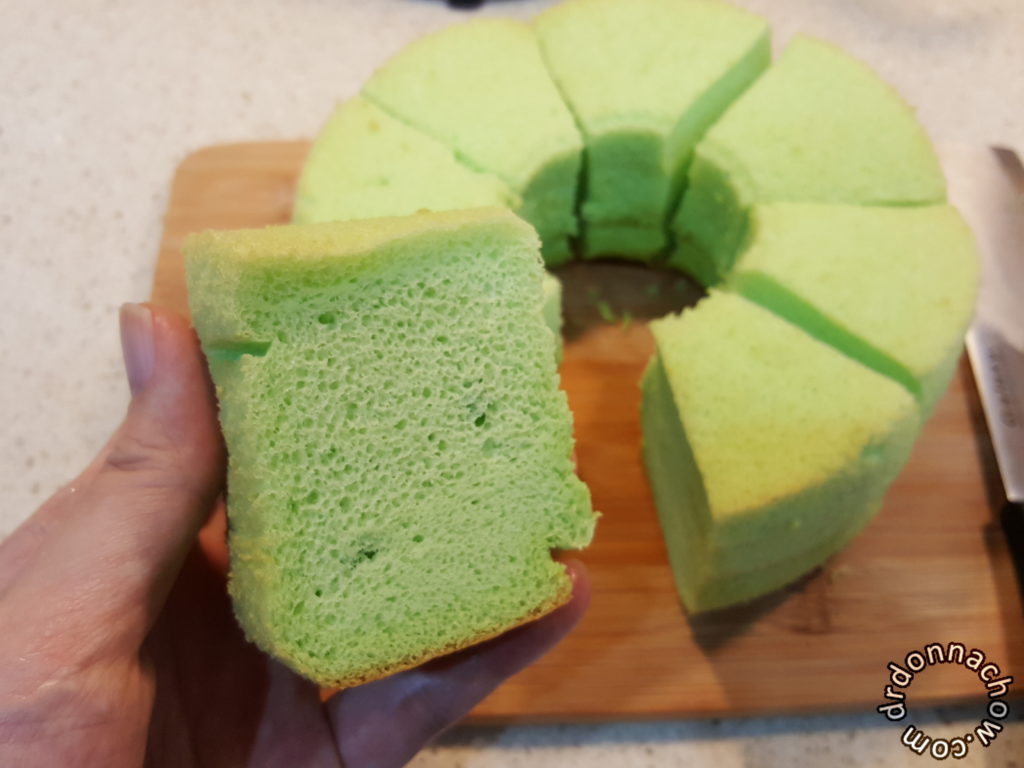
Pandan Chiffon Cake
Eversince my baking lesson with Susanne Ng, I have been intrigued by the world of chiffon cakes. It is one of the most basic cake you can master and one of those which calls for the least number of baking ingredients. There are plenty of pandan cake recipes online; I am sure you will find one which you will like. I am sharing my recipe and experience of making my own version of pandan cake here.
I like to keep my cake recipe simple. The lesser the number of ingredients the better; that way I do not need to invest in buying too much perishable items.
For the cake batter: you will need;
- 3 egg yolks (ideally 65 g medium sized eggs)
- 20 g caster sugar
- 40 g cooking oil (I used Canola oil which can be found in my kitchen)
- 40 g plain water (You can substitute this with freshly squeezed pandan juice)
- 1/4 tsp vanilla essence
- 1/4 tsp green pandan paste (Available from most baking section from supermarkets)
- 60 g sifted cake flour
Tip 1 – Measure all the ingredients in a precision electronic weighing scale before you start.
You can take your time to prepare the cake batter. But do it in the following sequence.
- Start with whisking the egg yolks and sugar.
- Add in the oil and water – mix well.
- Add in vanilla essence and pandan paste.
- Combine with the sifted flour in two batches.
The making of a chiffon cake involves two parts. First is the cake batter. Second is the meringue.
The meringue of any chiffon cake has to be prepared swiftly. Before I begin, I would start my oven to warm it to 150 degrees celsius. It takes me about 10-15 min to get the meringue ready, so this timing is just perfect. I also use an oven thermometer to countercheck my temperature in the oven.
For the meringue, you will need;
- 4 egg whites (from the same medium sized 65 g eggs; the higher egg whites : egg yolk ratio is supposed to increase the fluffiness of your chiffon cake. I would keep the extra egg yolk to fry some omelet for dinner)
- 1/4 tsp cream of tartar
- 45 g castor sugar
To make the meringue, use an electric whisk to beat the egg whites until it starts to foam. Add in the cream of tartar and continue to whisk again. When you start to see soft peaks, add in half of the castor sugar. Continue to whisk and add in the remaining half of the sugar.
From time to time, stop to observe if the meringue have reached “stiff peaks”. The meringue should stay upright when you invert the whisk (see photo below).
Once your meringue is ready, you need to quickly fold in the cake batter which you have prepared earlier and place it in the oven. If you don’t, the meringue will collapse and lose its integrity quickly at room temperature.
Tip 2 – I prefer to use a simple hand-held electric whisk instead of a standing rotating one. That’s because I can move up and down the mixing bowl to ensure that my meringue is well beaten. I also use a plastic spatula to make sure the sides of the meringue are scrapped down from time to time.

The stiff peaks you should get for a well beaten meringue
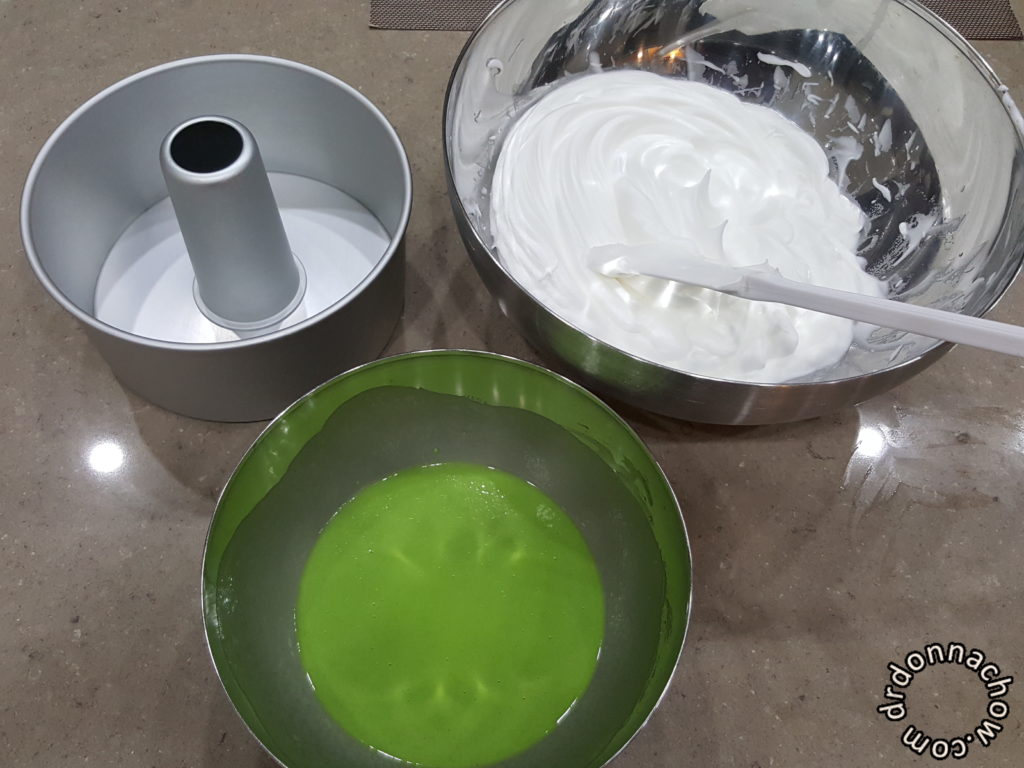
Just before folding in the meringue and cake batter
I love how the meringue looks before it is folded in – it looks like whipped cream. I would use a plastic spatula to gently fold in the meringue to the batter and then when I am almost done, I would pour the batter back to the bigger bowl containing the leftover meringue to make sure none is wasted. You need to do this step pretty fast before the meringue starts to disintegrate.
Tip 3 – Prepare a 18 cm ungreased tube pan. It should not be greased. Greasing the pan will impede the chiffon cake to rise nicely in the tube pan.
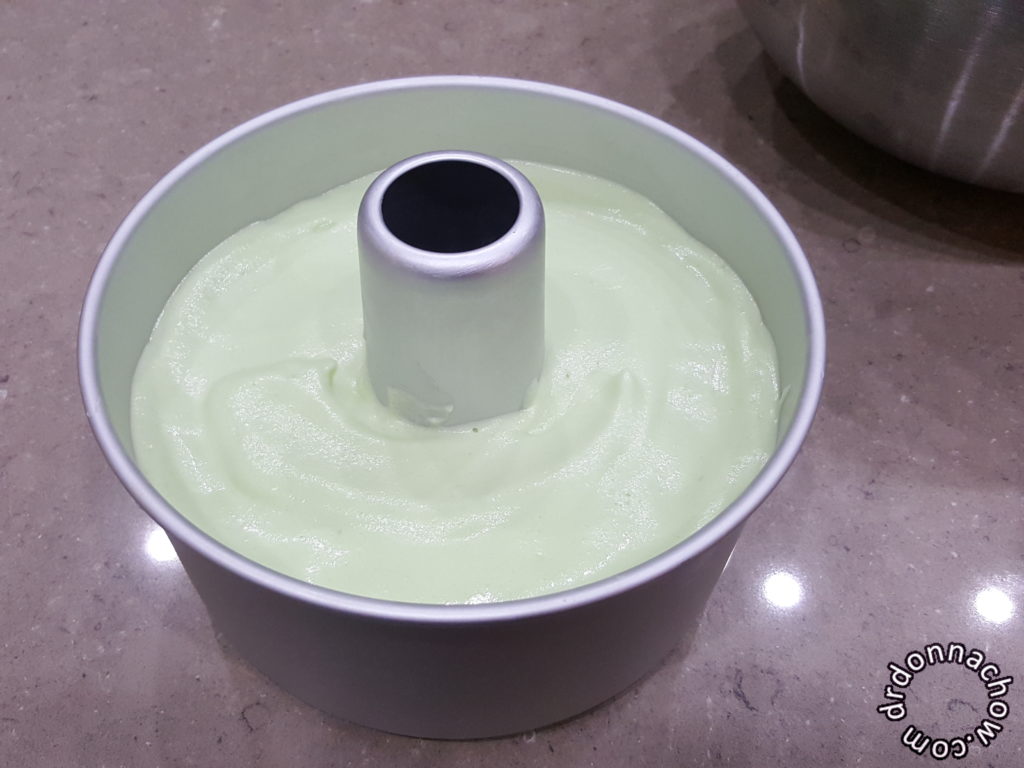
The final cake batter
I like to use a spoon to scoop my batter into the tube pan because it helps to ensure a smooth consistency of the cake. If you are lazy or impatient, you can just pour the batter in and gently tap it a few times on the table-top. Leave 2-3 cm from the top of the pan so that it allows room for the cake to rise.
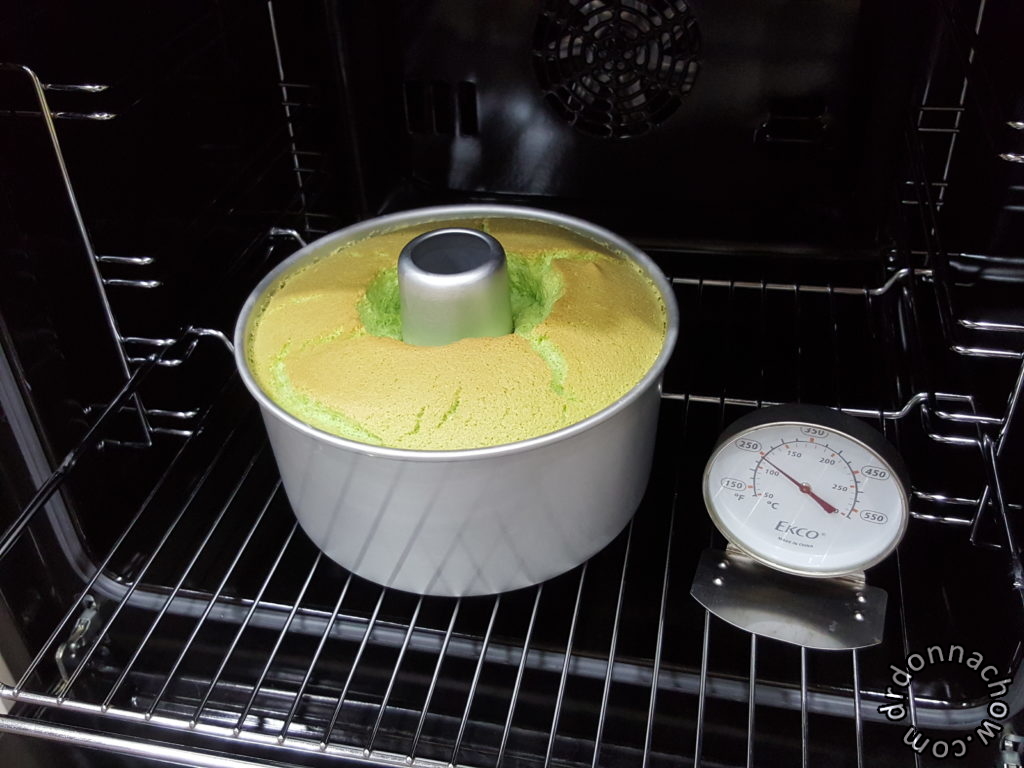
Fresh from the oven
From my experience, the success or failure of any cake depends largely on your oven. Every oven behaves slightly differently so you really need to know your oven settings really well. And it is only through experimentation that you can truely start to know how your oven functions.
I started baking chiffon cakes using the steam method (putting in a tray of water underneath the rack – I find that it creates uneven heat distribution and causes my cake to be baked unevenly. Maybe I am doing it the wrong way. But I find that it is not easy to control steam). Some cake gurus swear by the steam baking method as it causes less browning and give your cakes more moisture. However if you are not a veteran baker, I would suggest you a safer method; bake at a lower temperature and for a longer period. In this case, I bake at 140-150 degrees celsius for 50-60 minutes and check the chiffon cake for doneness with a wooden skewer.
Once the cake is out from the oven, invert the cake pan over a metal rack and leave it to cool for an hour before unmolding the cake by hand. Unmold the chiffon cake as gently as you can by pressing it on the sides. A good chiffon cake will spring back into shape.
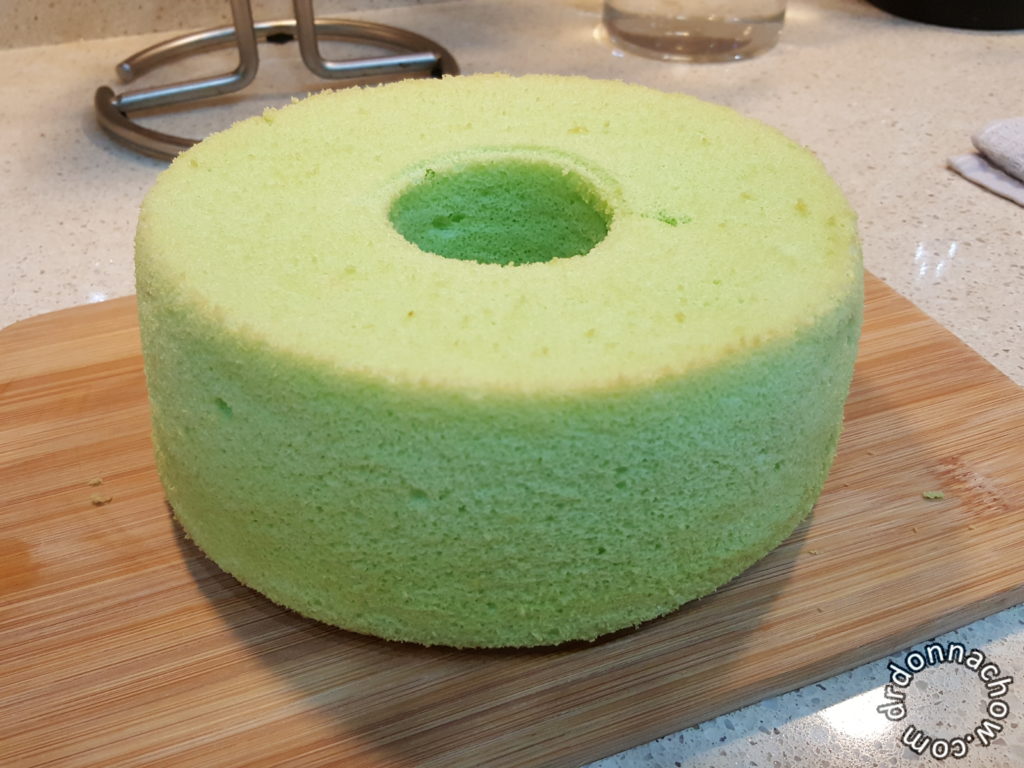
The unmolded cake
Tip 4 – After unmolding, you will find that the sides of the cake pan will be stucked with cake crumbs. Soak it in water for at least an hour before attempting to scrub off the cake crumbs. Use a brush if necessary.
I hope you enjoy this simple pandan chiffon cake recipe!
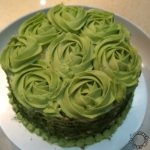


I completely agree with what you have written. I hope this post could reach more people as this was truly an interesting post.